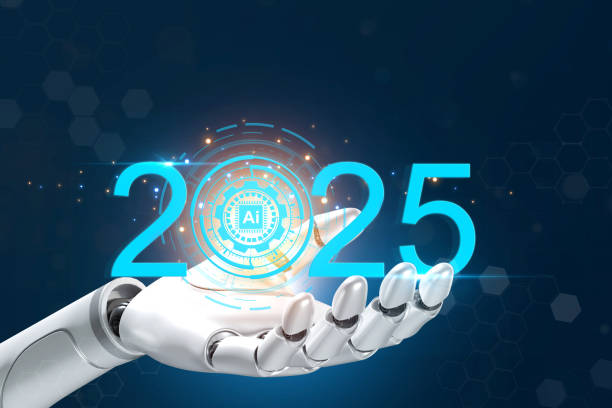Machine learning is growing fast. It helps solve real world tasks with smart code. To build great tools, you need strong support. The right tools can save time. They can also boost your model. In 2025, machine learning projects are smarter than ever. This year, tools are faster, lighter, and easy to use. They help both new and expert users. Picking the best tool is key. You want smooth work and great results. This guide lists top tools for machine learning projects in 2025. Each tool fits a need. Read on and learn what works best for your next plan.

Python Still Rules
Python is still the top choice in 2025. It is easy to learn. It works with many ML tools. You can build fast. You can test models with ease. Python keeps getting updates. It is used in all types of machine learning projects. From data prep to model build, Python does it all. Most tools support it. That means smooth flow from start to end. You get strong support and active help online. New users find Python simple. Experts love its speed and scale. That makes Python a must in machine learning projects today. Tools like Scikit-learn, Tensor Flow, and Py Torch run on Python. That gives you power. You do not need to switch codes. Your workflow stays clean. You get deep help from forums and sites. Python helps you focus on results. That is why most machine learning projects start with Python.
Tensor Flow Gets Smarter
Tensor Flow has grown in 2025. It now works faster. It runs on small and large tools. It fits mobile apps and web apps too. You can build deep nets with few lines of code. It is made by Google, so it gets strong updates. That helps your machine learning projects run smoothly and smart. You can now run Tensor Flow on the cloud with ease. It fits all devices. It also works with tools like Keras. Keras lets you code with less stress. It wraps Tensor Flow and keeps things neat. That saves time. New users love it. Experts get more done. Tensor Flow is strong in model build, training, and testing. If your machine learning projects need deep tools, try Tensor Flow.

PyTorch for Fast Build
PyTorch is loved by many users. It is now better in 2025. You can test things fast. You can change code as you go. That helps in quick model build. You do not need long waits. You just try and see. That is why PyTorch fits best in test runs. It is smooth for deep learning tasks. PyTorch works great with Python. That makes it easy to use. Its code feels like normal Python. You do not need to learn new rules. That makes it strong for machine learning projects. In 2025, PyTorch now has more tools for training and testing. It also runs well on the cloud. That saves space on your own tool. Your machine learning projects can grow fast with PyTorch. It also now works with Apple and Android apps. You can take your model live in less time. If you need fast work and deep tools, use PyTorch. It helps you think, test, and build with ease.
Scikit-learn for Simple Tasks
Not all machine learning projects need deep tools. Some tasks are small but still key. Scikit-learn helps with that. It is good for basic steps. You can do data prep, clean, and light models. It works best when you need clean and fast work. In 2025, Scikit-learn adds new model types. It is still light and fast. You can use it with Jupyter too. That gives you a smooth flow. Scikit-learn also fits well with NumPy and pandas. These tools help you shape your data. That makes your machine learning projects clean and neat. If you do not need deep nets, this tool is best. It helps you stay lean. You can try many models. You do not need heavy tools. That saves time and space. Many schools and first users start here. But even big firms use Scikit-learn for quick tasks. In 2025, it stays key for small machine learning projects.
Jupyter Notebooks for Code and Notes
Jupyter is not just for code. It lets you write notes and code in one space. That is key for all machine learning projects. In 2025, it is even better. You can now run large code with less wait. You can add live charts. You can also share with teams. This tool helps track steps. You can look back at what you did. That helps debug and plan. You can also add tips for your team. That makes work smooth. Your machine learning projects will stay clear and safe. Jupyter now fits with many tools. You can use TensorFlow or Scikit-learn in it. That makes it a full base for your task. You do not need many tabs. It all stays in one file. That makes Jupyter a top pick for 2025. Use it for all types of machine learning projects.

AutoML Makes Things Easy
AutoML is the new trend in 2025. It helps users with less skill. You just give it your data. It picks the best model. It trains and tests it too. That saves a lot of time. For fast machine learning projects, this is gold. Tools like Google AutoML and H2O.ai lead this space. They give smart help. You still have full control. But they guide your task. This is key for teams with less code skill. AutoML also helps large firms. It speeds up test runs. You can build five models and pick the best. In 2025, AutoML now fits with cloud tools. That means you do not need strong tools at home. You just use the cloud. Your machine learning projects run fast and safe. AutoML is best when you need speed. It lets you build smart models with few clicks.
Conclusion
The world of machine learning projects keeps changing. In 2025, new tools make things fast and smart. You still need good code. But the right tool helps a lot. Tools like Python, TensorFlow, and PyTorch stay strong. Others like Scikit-learn and AutoML fill key needs. Jupyter helps track your path. Your machine learning projects will grow faster with these tools. Pick what fits your task. Try them and learn what works. Each one adds value. Use these tools well and you will build smart, clean, and strong models. 2025 is a great year for machine learning projects.
